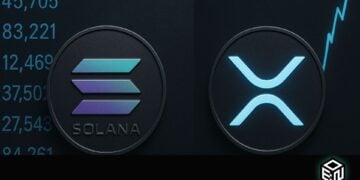- Ronin (RON) saw its price plunge nearly 30% after being listed on Binance, erasing previous gains made following the listing
- Negative investor sentiment shifted dramatically, with social volume spiking 254% and negative sentiment jumping from 0.87 to 5.58, likely contributing to the flood of selling
- Allegations surfaced that Binance manipulated the price, though co-founder Yi He offered a bounty for info on staff involvement, showcasing a commitment to fairness
Ronin (RON) saw a dramatic price drop right after being listed on Binance, erasing its previous gains and falling nearly 30% in 24 hours. The initial listing led to a surge in interest and network activity, but selling pressure quickly mounted. This article examines the events behind the coin’s sudden decline.
Price Hits New High Then Falls Sharply
Following a recovery that briefly pushed Ronin above $3 for the first time in two years, the token encountered strong resistance. Despite reaching a peak of $3.538, RON then retreated below $2.62 – losing all its recent gains. The sharp drop also pushed Ronin’s market cap below $1 billion.
Investor Sentiment Turns Negative
According to Santiment, social volume surrounding Ronin surged 254% while negative sentiment jumped from 0.87 to 5.58. This indicates a dramatic shift in investor outlook, likely contributing to the flood of selling. Trading volumes soared 275% to $203 million as holders rushed to sell amid the negativity.
Allegations of Manipulation Surface
The price volatility led some to allege manipulation by Binance. However, co-founder Yi He offered a bounty for information on staff involvement, showcasing a commitment to fairness. The reasons for the sudden decline after listing remain complex.
Conclusion
While the Binance listing initially drove up interest in Ronin, sellers soon took control – erasing gains and pushing RON down 30% in a day. Shifting sentiment likely contributed to the coin’s collapse, though the causes are still debated. Either way, Ronin’s dramatic price swing highlights the volatility of newly listed assets.














